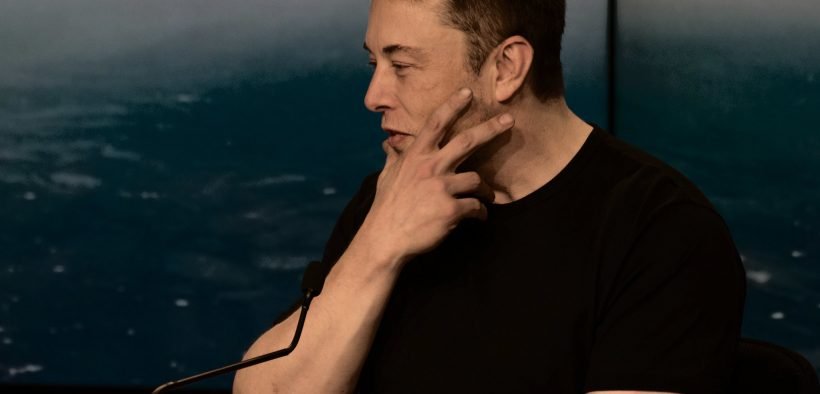NASA and SpaceX Announce Manned Spaceflight, Ending Decade-Long Gap of American Launches

“It’s going to uplift America. We need that moment right now in American history.”
Since July 8, 2011, no US spacecraft has ferried Americans into space. When Space Shuttle Atlantis landed at Kennedy Space Center 13 days later, it ushered in the longest gap in manned spaceflight for NASA. Before the Space Shuttle program, American spaceflight waited 8 years and 4 months after the closing of the Apollo program.
In the absence of the shuttles, the organization has relied on Russian flights to take Americans to the International Space Station. Those flights cost an average of $55.4 million per seat, CNN reported. NASA never intended to permanently recede from manned space exploration and began developing its Orion spacecraft. Funding challenges and program changes plagued the rollout of Orion and the goal ultimately changed from returning to the moon to using the moon as a base for future Mars launches.
Private spaceflight proliferated since the shuttle program was shuttered; Boeing, SpaceX, Virgin Galactic, and Blue Origin have pursued private, commercial, and government contracts. NASA signed partnerships with them and provided various levels of funding to pursue research opportunities, transport materials, and ultimately send Americans back to the moon sooner than it can with its own Orion craft.
It is with SpaceX that NASA has set a launch date of May 27. At 4:32 p.m. EDT, astronauts Bob Behnken and Doug Hurley will takeoff from Florida aboard the SpaceX Crew Dragon spacecraft.
Jim Bridenstine, NASA administrator, believes the timing is right to send Americans back to space from US soil. Even with the coronavirus pandemic — especially with it — there is no better opportunity to give America hope, he told CNBC.
“It’s going to uplift America. We need that moment right now in American history,” Bridenstine said.
Return on Investment
Space flights from Kennedy Space Center are typically well-attended occasions with even night launches drawing crowds. This time, however, social distancing rules will prohibit a live audience, but NASA is working to ensure the world tunes in.
“We’re going to showcase it,” Bridenstine. “We want to do as much as we can to reach every person in America and, in fact, every person in the world and we have the ability to do that with the technology that exists today.”
The May 27 mission, dubbed Demo-2, is officially a test mission for the Crew Dragon craft, CNN reported. In January, Space X successfully executed an unmanned test of its emergency abort system. The company has also focused on reusability for its rocket boosters by designing them to autonomously land aboard one of two barges in Cape Canaveral.
The Crew Dragon will launch atop the Falcon 9 launch vehicle, which received the highest certification from NASA — Category 3 — due to a reliability of 90% to 95%.
When NASA awarded $2.6 billion to SpaceX for developing astronaut-worthy craft in 2014, the agency planned to start sending its crews in 2017. Although it’s three years late, NASA’s investment may finally payoff.
Plans for May and Beyond
Although COVID-19 has shut down life on Earth, it continues to go on aboard ISS. Consequently, there must be astronauts to watch over it and carry out tasks like scientific experiments and maintenance.
Hurley and Behnken are no strangers to spaceflight: both crewed shuttle missions after military careers as test pilots. Currently, NASA is predicting they will stay aboard the ISS for 110 days, but the timeline could be altered depending on the availability of another spacecraft to launch.
“We bring them back a month before we’re ready to launch Crew-1 so we can take that month and investigate every part of the crew capsule,” Bridenstine said. “So the length of their stay on the ISS is going to be dependent on when the Crew Dragon is ready for Crew-1.”
Once they splashdown in Florida, assuming all parts of the craft are deemed worthy during Demo-2, the Crew Dragon will enter into regular service for NASA, TechCrunch reported.
The first official mission, designated Crew-1, is roughly planned for August, Bridenstine said. Three NASA astronauts — Shannon Walker, Michael Hopkins, and Victor Glover Jr. — will fly alongside Soichi Noguchi from Japanese space agency JAXA.
“We want to get into the regular crew launch schedule” Bridenstine said. “We want to have as many crew as possible on the space station for as much time as possible, that’s what we’re trying to optimize.”
After enduring nearly a decade of no manned flight capabilities, NASA appears eager to make up for lost time. Soon, SpaceX may be joined by Boeing’s Starliner and the Orion craft, making for a three-pronged American space front.







